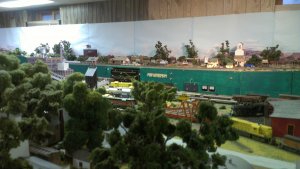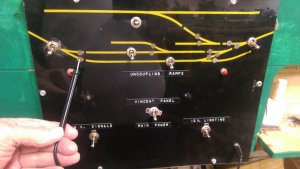Raincoat2
Well-Known Member
New to the hobby, been on this forum for several months, asking questions, learning from the experiences railroaders, participating as I can. Got our first build going - benchwork is coming along nicely.
Here's my question: looking at photos and watching videos, I see that most of you add a fascia to the benchwork, probably mostly to give it a finished look. But I notice that most of you also either add another piece around the perimeter of the tops or else have the fascia extend a few inches above the tabletops, mostly to protect from a derailed train falling to the floor. So, 1) what do you use for the fascia or protective piece (wood, Masonite, cardboard, etc etc), and 2) how high above the tabletop do you extend the protection?
Thanks.
Johnny (Raincoat2)
Here's my question: looking at photos and watching videos, I see that most of you add a fascia to the benchwork, probably mostly to give it a finished look. But I notice that most of you also either add another piece around the perimeter of the tops or else have the fascia extend a few inches above the tabletops, mostly to protect from a derailed train falling to the floor. So, 1) what do you use for the fascia or protective piece (wood, Masonite, cardboard, etc etc), and 2) how high above the tabletop do you extend the protection?
Thanks.
Johnny (Raincoat2)



